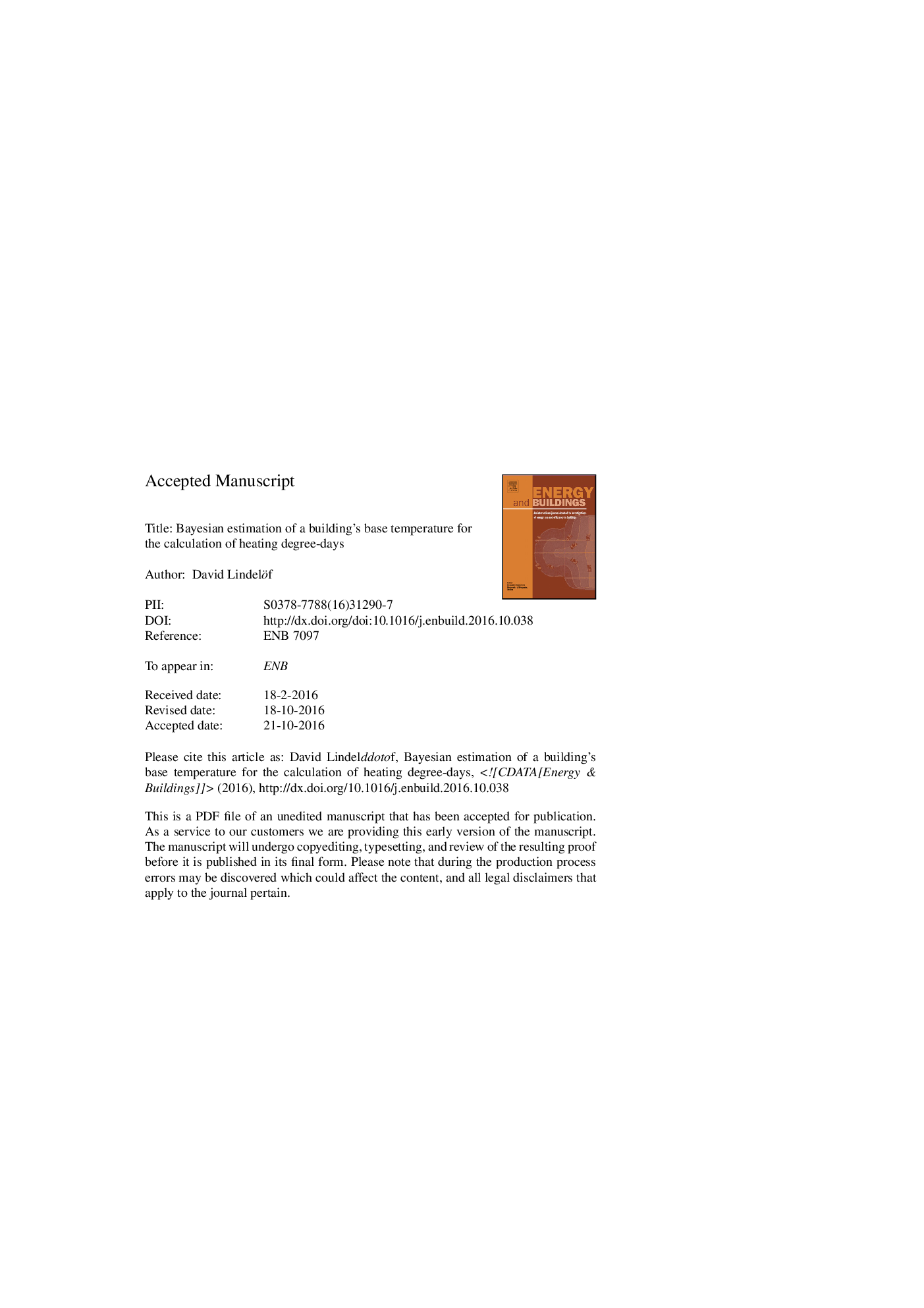| Article ID | Journal | Published Year | Pages | File Type |
|---|---|---|---|---|
| 4914255 | Energy and Buildings | 2017 | 17 Pages |
Abstract
Measuring the energy efficiency of a building requires adjusting for factors that affect the energy demand, such as the weather. When dealing with heating energy demand, this implies calculating heating degree-days for that building from climate data and the building's base temperature. This work describes a method for estimating a building's base temperature from periodic energy consumption records such as utility bills and weather data. This method derives not only the base temperature, but also the building's heat loss coefficient, base load, and daily heating variability. Unlike other techniques, this method uses Bayesian inference and provides exact confidence intervals. The theory is laid out before testing the method first on synthetic, “ideal” data, then on a set of real energy consumption data. The heating degree-days calculated from this estimated base temperature are almost perfectly proportional to the heating demand, unlike those obtained by the use of an officially recommended base temperature. The method is implemented in a freely available package in the R programming environment.
Keywords
Related Topics
Physical Sciences and Engineering
Energy
Renewable Energy, Sustainability and the Environment
Authors
David Lindelöf,
